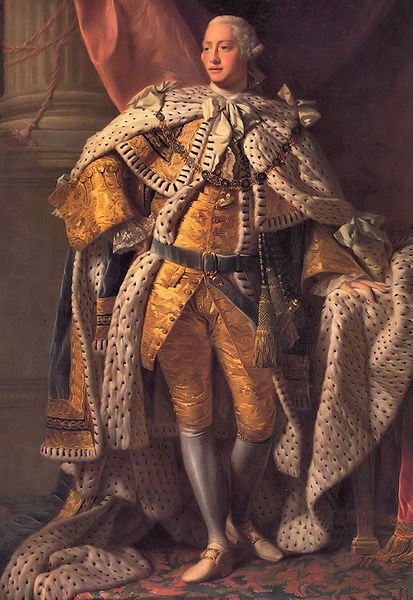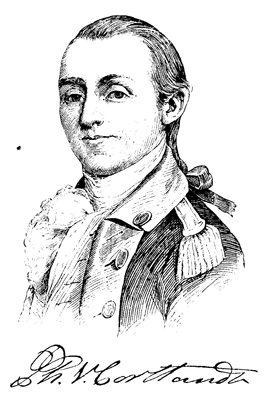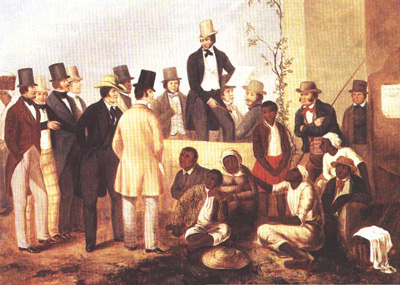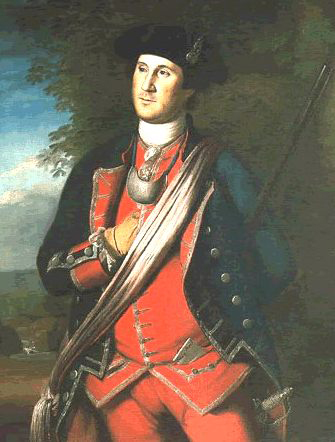What Is The Tone Of Work And Why Of A Turkey Decorative Art In 1733
Lesson Programme past:
Sember Weinman, Didactics Coordinator
Lehman College Art Gallery
Architect:
Frederick Van Cortlandt Curriculum Link:
High School U.South. History
Unit Two: A:3 Colonial experience: political rights and mercantile relationships A:4 The Revolutionary War Project Aim:
Students study the architectural and historical site of the Van Cortlandt House, the oldest building in the Bronx, habitation of the prominent Van Cortlandt family unit, and strategic location for the Revolutionary War. Vocabulary:
Georgian compages: The classical architectural style current between 1720 and 1840, named after the four British monarchs named George. Georgian Architecture is characterized by its sense of proportion and balance. Georgian designs ordinarily include one or more than of the orders of architecture and other elements derived from ancient Rome or Hellenic republic. In the United States, this fashion became unpopular afterward the Revolution, due to its association with the colonial regime.
Cavalcade: An upright post, bearing the load of the upper part of a building. It consists of a base, a shaft, and a capital. An engaged cavalcade is half a column, fastened to a wall, and non-weight bearing.
Pilasters: A rectangular engaged column, sometimes decorative, but at other times used to buttress a wall. Description:
Oloff Stevense Van Cortlandt was a Dutch merchant who built his fortune through trade. His son, Jacobus Van Cortlandt began purchasing country in the Bronx in 1694, and gradually turned the family business organization into a wheat plantation with extensive milling operations.
The Van Cortlandts lived in the house until 1886, when the entire estate was sold to the Urban center of New York and became Van Cortlandt Park. The house was designated as a museum by the National Guild of Colonial Dames in 1896, making it New York'south oldest historical house museum. It is also the oldest building still standing in the Bronx.
Historical Background:
Georgian compages developed in England out of the Classical Revival which dominated Europe during the Renaissance and Enlightenment. The Georgian way's name comes from the kings of Swell United kingdom of great britain and northern ireland who ruled England while Georgian compages was pop. From 1714 until 1820 England was ruled by George I, George II and George Iii.
Georgian architecture became unpopular in the United States at the time of the Revolutionary War equally American architects wished to separate their fashion from British influence.
Why apply architecture? What can it teach us?
Art is part of the complex structure of beliefs and rituals, social and political systems, and the stories of every human society. In compages, the construction, part, and purpose of a edifice is fused seamlessly with the artful, social, and political preferences of a item fourth dimension and place. The purpose for a building'due south use determines its size, its shape, and the materials chosen. The value that a society places on that purpose is reflected in the decoration, the scale, and the amount of time taken to create a edifice. Architects choose to borrow styles from the by as their estimation of a detail philosophy or ideal. Buildings embody cultural values in every tile or stone. This unit of measurement enables students to identify architecture inside a historical context.
5 grade periods plus enquiry that volition be conducted as homework.
SESSION Ane:
Students will brainstorm this unit through their study of the Revolutionary War.
Objective:
Students will be able to depict basic elements of the Georgian way of compages as interpreted by American builders, and volition thereby be able to draw the social, philosophical, and political ideas inherent to this fashion.
Exercise Now:
Students respond to the following questions, written on the board prior to class: "In the 18th Century, much of what we at present know equally the Bronx was called "Fiddling Yonkers". Can you lot imagine what information technology must have been similar? Who lived there? What did they practice? How did it differ from the Bronx that we know today?
Materials:
Transparencies of examples of Georgian Compages, including the Van Cortlandt Firm, overhead projector, printed out Van Cortlandt family history with questions.
Action:
 Royal Crescent, Bathroom, England
Royal Crescent, Bathroom, England
Later on the students complete their reading on colonial times and the Revolutionary State of war, put up a transparency of a British building (such as the Royal Crescent, Bath) congenital in the Georgian fashion. Explain that this is an example of a British building during the fourth dimension of the Revolutionary War.
• Inquire students to spend v minutes writing downwards observations of the edifice.
• Ask students to share their observations as you write their answers on the board.
Put a transparency of the Van Cortlandt firm on the projector.
• Tell students to spend 5 minutes recording their observations of the differences and
similarities between this case of American Georgian Architecture and its British
counterparts.
• Enquire students to share their observations every bit you write downward their answers on the board.
• Inquire students what they retrieve the reasons are for the somewhat simpler however similar
designs in American Georgian Architecture?
• Ask students why they think American architecture at the time was and so heavily
influenced past the architecture in England?
Give each student a copy of the Van Cortlandt family unit history with questions. Ask them to review the data and answer the questions. This may be completed equally homework.
Wrap Up:
Ask class: Why would this family live in this kind of house? Bring together the ideas raised by looking at the architecture and considering the Van Cortlandt family history. Tell students that they volition be writing a play based on the Van Cortlandt family unit, so they should exist prepared to imagine going dorsum in time.
SESSION 2:
Students visit the Van Cortlandt House.
Objective:
Students will be able to observe and identify elements of Georgian Architecture, experience what it might take been like to live as the Van Cortlandts did in the 18th Century, and think about the use of the firm by both armies during the Revolutionary War.
Materials:
Each educatee volition bring a notebook or a clipboard with blank pages fastened.
Activity:
Students will exist asked to take notes on the people who lived in and stayed at the Van Cortlandt House and describe sketches as they visit each room of the house. They will each draw a sketch of the house outside. They will exist able to use this visual data for the adjacent role of the project.
SESSION Iii:
Students piece of work in groups to create one-act plays based on the information that they learned on the Van Cortlandts, their house, and the Revolutionary War.
Objective:
Students volition exist able to imagine the choices, the conflicts, and the struggles that went on throughout the long history of the Van Cortlandt mansion past creating a one-act play based on choices listed on their worksheets, and curt historical descriptions.
Do Now:
Students respond to the post-obit question, written on the board prior to grade: "Tin you imagine what information technology might have been like living in the Van Cortlandt House in the 18th Century? Think nearly i of the people who you learned most on the tour, and write an imaginary journal entry."
Activity:
Divide students into groups of four or five. Enquire each grouping to choose ane person as the recorder. Give each group a unlike paper that describes a scenario. Each group will choose 1 item from each category. Based on the information given and the students' knowledge of American history, they will write a script for a one-act play. They must include an introduction, a climax, something that a character needs (could be an object, information, or a favor), and a decision in their play. A line requirement might be given.
SESSION Four:
Students keep to piece of work in groups. They complete their scripts and rehearse for the second half of the course.
Objective:
Students will be able to imagine the choices, the conflicts, and the struggles that went on throughout the long history of the Van Cortlandt mansion by creating a one-act play based on choices listed on the board and brusque historical descriptions.
Do At present:
Students respond to the post-obit question, written on the board prior to class: "Tin can you remember of a modern 24-hour interval state of affairs that is similar to the problems the characters face in your play? Write a cursory synopsis for this gimmicky conflict."
Action:
Carve up students into the same groups that they were in yesterday. Tell them that they take half the period to complete their scripts, and half the period to piece of work on their characters and rehearse
 King George III in coronation robes
King George III in coronation robes
SESSION FIVE:
Students nowadays their plays.
Objective:
Students will successfully draw the choices, the conflicts, and the struggles of the Van Cortlandt family presented by the other groups in the class. In addition, they will be able to critically assess the plays of their classmates.
Do Now:
Students respond to the following questions, written on the board prior to class: "What genre was your play written in? Is it a one-act? A tragedy? Drama? Do you call back this is the best tone for the information you are sharing? Why or why not?"
Activity:
Students nowadays their ane-act plays to the class. While observing, students are asked to write down one complement and i question for each play that is non their own. At the end of each play, these thoughts are shared with the presenters.
ASSESSMENT:
At the end of the workshop, students turn in their edifice observations, their answers to the Van Cortlandt family history with questions, their drawings from their visit to the Van Cortlandt Firm, and their scripts. They will also be graded on their level of participation in the play.
EXTENSIONS:
1. Students can further develop their plays using
their drawings from their visit to the Van
Cortlandt Business firm to build sets. They can also
make costumes, and develop their characters.
two. Students can work together as a class to
bring their brusk plays together to create a
play that covers unlike periods throughout
the Van Cortlandt family unit history. Enquire the
students to address the theme of how the
structure of the building remains constant while
the attitudes of the people who live in and use
the building modify.
iii. Other classes may exist invited to see the Van Cortlandt
family play—or the play may be videotaped.
4. Students can write reviews of the other groups' plays.
RESOURCES FOR Inquiry:
Spider web
American Retentiveness Project, U.S. Library of Congress
http://retentivity.loc.gov
Celebrated Business firm Trust
http://www.historichousetrust.org
Lehman College Fine art Gallery Public Fine art in the Bronx
http://www.lehman.edu/publicart
Metropolitan Museum of Art, Timeline of Art History
http://www.metmuseum.org/toah/splash.htm?HomePageLink=toah_l
Van Cortlandt Firm
http://world wide web.vancortlandthouse.org
Books
Honour, H. and Fleming, J. The Visual Arts: A History, New Jersey: Pearson Education, Inc., 2005.
Salvadori, 1000., Hooker, S. and Ragus, C. The Art of Construction: Projects and Principals for First Engineers and Architects, Chicago: Chicago Review Printing, 1990.
White, N. and Willensky, East. AIA Guide to New York Urban center: The Classic Guide to New York'south Architecture (4th Edition), NY: Iii Rivers Press, 2000.
STANDARDS:
S.Due south. Standard 1—History of the United States and New York: Students will learn about American History through their written report of the Van Cortlandt family and their estate.
South.Southward. Standard 2—World History: Students will develop an understanding of the ideas, social and cultural values, behavior, and history leading to the Georgian style in both U.S. and European architecture, and the global causes and effects of the American Revolutionary War.
South.S. Standard 3—Geography: Students volition report the physical and social environments and human systems of New York in the 18th Century.
Southward.S. Standard four—Economics: Students will consider the economical structures and controls used by the Van Cortlandt family.
South.S. Standard 5—Civics, Citizenship, and Authorities: Students will acquire almost the changing political systems of America before the Revolutionary War; and the dissimilar assumptions on power, authority, governance, and law held by the people living during these times.
________________________________________________________________
VAN CORTLANDT Family unit HISTORY AND QUESTIONS:
Oloff Stevense Van Cortlandt was a Dutch merchant who congenital his fortune through trade. His son, Jacobus Van Cortlandt began purchasing country in the Bronx in 1694, and gradually turned the family unit business into a wheat plantation with extensive milling operations.
 Oloff Stevense Van Cortlandt
Oloff Stevense Van Cortlandt
Jacobus' son, Frederick, inherited the estate and commissioned the Van Cortlandt Business firm in 1748. He chose for his house the English Georgian fashion of compages, just added details that exercise not fit in with architectural conventions of the mean solar day. Over the nine windows on the front of the house are grotesque masks that may have been added to ward off evil spirits. The firm was built of native fieldstone. It had ii parlors on the starting time flooring, ii 2nd-floor chambers, and two smaller chambers on the third flooring. One of these was left unfinished. The firm was congenital when Frederick turned 50. It may have been congenital so that his two immature daughters would take a place to entertain their friends as the embarked on the age of courtship. He may take besides planned for his son James to accept a comfortable place to live when he inherited the family plantation. Frederick died earlier the firm was finished.
During the Revolutionary War, the business firm and plantation were considered neutral ground; it was headquarters to both George Washington and his troops and the British officers at diverse times throughout the war.
The Van Cortlandts lived in the business firm until 1886, when the entire manor was sold to the City of New York and became Van Cortlandt Park. The business firm was designated equally a museum by the National Guild of Colonial Dames in 1896, making it New York'southward oldest historical house museum. Information technology is also the oldest building still continuing in the Bronx.
1. Why practise you think a prominent Dutch family unit living in America would adapt the
predominant style of architecture under King George?
2. When was the house built? What was the political state of affairs in America at this time?
Do you lot retrieve if one of Frederick's sons had decided to build another house 30 years
afterward he would have called the same manner? Why or why not?
3. Why do you remember the Van Cortlandt firm was used every bit headquarters for both
General Washington and the British Officers?
4. What do you lot think the Georgian style of architecture came to represent to Americans
during and after the Revolutionary State of war? Why?
________________________________________________________________
Choose one person to be the recorder. This paper describes your scenario. You are to choose one item from each category. Based on the information given and your knowledge of American history, you will write a script for a comedy play. You lot must include an introduction, a climax, something that a character needs (this could be an object, information, or a favor), and a conclusion to your play.
Scenario 1:
Information technology is 1733. Jacobus Van Cortlandt places an advertisement in "The New York Gazette" to recover a runaway slave named Andrew Saxton. In his advertisement, he describes Saxton every bit "a tall lusty fellow, is very black walks stopping, and somewhat lamish with his left leg; the thumb of his left hand is somewhat stiff, by a wound he had in his hand formerly; the shirts he had with him and on his back are marked with a cross on the left breast. He professeth himself a Roman Catholic, speaks very proficient English language, is a carpenter and cooper by trade, and has with him a broad-ax, a two-foot rule, and a hollow howl."
Choose one from each category to determine the story:
Character i:
1. Jacobus Van Cortlandt
ii. Andrew Saxton
(List 5 personality characteristics and write downwards one thing that this person needs)
Character ii:
ane. Eva Van Cortlandt (Jacobus' married woman)
two. New York Gazette Reporter
3. Frederick Van Cortlandt (Jacobus' son)
(List 5 personality characteristics and write down one thing that this person needs)
Time:
one. Morning
2. Afternoon
3. Evening
4. Night
Place:
i. The Unfinished Chamber
2. The E Parlor
3. In the Van Cortlandt holding fields
four. In NYC
 1852 oil painting depicting the scene of a slave market place
1852 oil painting depicting the scene of a slave market place
Prop:
1. A gun
ii. A letter
iii. A newspaper
4. A wallet full of coin
Emotion:
1. Anger
two. Fear
3. Excitement
iv. Pride
________________________________________________________________
Cull one person to be the recorder. This paper describes your scenario. You are to choose one item from each category. Based on the information given and your knowledge of American history, you will write a script for a one-act play. You must include an introduction, a climax, something that a graphic symbol needs (this could be an object, information, or a favor), and a conclusion to your play.
Scenario 2:
It is 1749. Construction on Frederick Van Cortlandt's firm began terminal twelvemonth and is however underway. At the same fourth dimension, Frederick becomes ill and dies after that year. When he dies, his three sons are historic period 22, 21, and xix, and his daughters are 13 and 12. In his volition he bequeaths to his wife Frances "My two negro girls, two chaises, and the use of my estate for your lifetime," He also leaves Levelle the boatman to his son James, five more slaves to Frances, a female slave to each of his daughters, Anne and Eve, and a male slave to each of his sons, Augustus and Frederick.
Choose one from each category to make up one's mind the story:
Character 1:
ane. Frederick Van Cortlandt
2. James Van Cortlandt (Fredrick'south son)
three. Levelle the boatman
(List v personality characteristics and write down i thing that this person needs)
Graphic symbol two:
1. Frances Van Cortlandt (Frederick's wife)
2. Anne Van Cortlandt (Frederick'south girl)
3. The pb person in the construction of the house
(List v personality characteristics and write down one thing that this person needs)
 1844 oil painting by George Harvey
1844 oil painting by George Harvey
Time:
one. Early in the year before Frederick becomes sick
ii. In the summer when Frederick is ill
3. At the time of Frederick's death
4. After his expiry
Place:
i. In the unfinished kitchen
of the house
2. In a befouled on the estate
3. In the Van Cortlandt belongings
fields
four. In the West Parlor
Prop:
ane. A will
2. A letter
3. A deed
4. A piece of jewelry
Emotion:
1. Sadness
2. Joy
3. Excitement
4. Pride
________________________________________________________________
Cull ane person to be the recorder. This paper describes your scenario. You are to cull one item from each category. Based on the data given and your noesis of American history, y'all will write a script for a one-act play. Y'all must include an introduction, a climax, something that a character needs (this could exist an object, data, or a favor), and a conclusion to your play.
Scenario 3:
It is 1775. The revolutionary war has begun with the battles of Lexington and Concord, Massachusetts. James is a colonel in the Westchester County Militia. He and his brother Frederick are elected to stand for Westchester in the new Provincial Congress. They tell their brother Augustus, who is a clerk of the metropolis and county of New York, to secure the city records from the British due to the "alarming state of public affairs." Despite having sympathies towards the British, he put the records into chests and secured them in a cellar in the garden.
Choose 1 from each category to determine the story:
Character 1:
1. Frederick Van Cortlandt, Jr.
two. James Van Cortlandt
(List 5 personality characteristics and write downward i thing that this person needs)
Grapheme 2:
ane. Augustus Van Cortlandt
ii. Elizabeth Cuyler (James' married woman)
3. Frances Van Cortlandt (Frederick, James, and Augustus' mother)
(Listing 5 personality characteristics and write down one thing that this person needs)
Time:
1. During the Provincial Congress elections
ii. During a meeting betwixt the three brothers about the "alarming situation."
3. After James and Frederick come across with Augustus
Identify:
ane. In a court room in NYC
2. In the Van Cortlandt parlor
3. In the garden cellar
4. In the Van Cortlandt kitchen
Prop:
i. A newspaper
2. A letter
3. Urban center Records
iv. A key
Emotion:
ane. Fear
2. Anger
iii. Excitement
4. Resentment
________________________________________________________________
Choose one person to be the recorder. This paper describes your scenario. You are to cull i item from each category. Based on the information given and your knowledge of American history, you will write a script for a one-act play. You must include an introduction, a climax, something that a character needs (this could be an object, data, or a favor), and a conclusion to your play.
Scenario 4:
It is 1776. The Revolutionary War is raging. On October 12, General Washington sets up temporary headquarters at Van Cortlandt House. They stay until October 18, heading for White Plains. Philip Van Cortlandt, James' cousin, worked as an assist to the Commander in Principal. The battle of White Plains takes place between October and November of that year.
Choose one from each category to decide the story:
Character 1:
1. General Washington
2. James Van Cortlandt
(Listing 5 personality characteristics and write down one matter that this person needs)
Character 2:
1. Philip Van Cortlandt
2. Frederick Van Cortlandt Jr.
3. An American officer
(Listing 5 personality characteristics and write down one thing that this person needs)
Time:
1. Earlier George Washington'due south army arrives at the Van Cortlandt House
ii. During the occupation
iii. As the regular army prepares to leave for the next battle
 Earliest portrait of Washington, painted in 1772
Earliest portrait of Washington, painted in 1772
by Charles Willson Peale, shows Washington in
compatible equally colonel of the Virginia Regiment
Identify:
1. In a field on the Van Cortlandt plantation
2. In the dining room
three. In the Van Cortlandt parlor
4. In the unfinished room
Prop:
one. A map
two. A alphabetic character
3. A medal
4. A key
Emotion:
ane. Fear
2. Acrimony
3. Excitement
4. Worry
Source: https://www.lehman.edu/vpadvance/artgallery/arch/ideas/van_cortlandt.html
Posted by: mageesudeings.blogspot.com

0 Response to "What Is The Tone Of Work And Why Of A Turkey Decorative Art In 1733"
Post a Comment